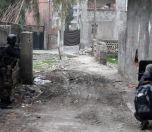Click here to read the article in Turkish / Haberin Türkçesi için buraya tıklayın
Peoples’ Democratic Party (HDP) Co-Chair, Selahattin Demirtaş has said that fire opened on group of 15 people that includes HDP Şırnak MP, Faysal Sarıyıldız as well coming to Turkey’s southeastern Cizre district of Şırnak province; 10 people wounded and they couldn’t be taken to hospital.
Demirtaş said the following:
“Wounded cannot be retrieved”
“Sarıyıldız informing Cizre sub-Governor that they will move with the families to retrieve six wounded. Despite that, civilian group of 15 people were fired on, which leaves 10 wounded including İMC TV cameraperson. MPs, mayor and civilians barely save their lives. There are 10 injured near them.
“The wounded lose blood; they cannot take them to hospital. They are waiting under the basement for rescue.
“We’ve received the information that shooting stopped but ambulances are not allowed to go and take the wounded”.
“Parliament has never been as guilty as now”
Demirtaş stating the parliament has turned into an institute monitoring and supporting the massacres said it is a shame.
“Gross human rights violations took place in the past too but commissions were formed in the parliament and went to scene of the incidents.
“There has never been a time when the parliament has been this guilty. HDP Group will determinedly react against this insensitivity. Heavy crimes are being committed. You cover all these up to not let west of Turkey hear these”. (EKN/TK)




.jpg)

kkk.jpg)